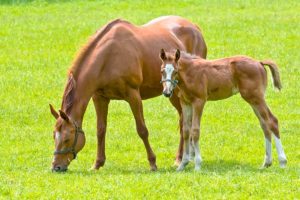Understanding the Biomechanics of Lameness
- Topics: Article
Equine locomotion seems like a sophisticated thing. All those delicate bones, joints, tendons, and muscles must move in tandem to propel the horse's large body forward at varying speeds.
But in truth, it's really quite simple and predictable—so much so that veterinarians can evaluate a horse's movement pattern and detect abnormalities related to pain or dysfunction.
At the American Association of Equine Practitioners' Focus on the Sport Horse program, held July 20-22 in Louisville, Kentucky, Hilary Clayton, BVMS, PhD, MRCVS, Dipl. ACVSMR, McPhail Dressage Chair Emerita at Michigan State University and president of Sport Horse Science, in Mason, Michigan, discussed equine locomotion and how the horse's gaits adapt to lameness. She shared her knowledge about the horse's stride and assessing it for lameness; but first, she gave the veterinary audience a brief physics refresher.
The Forces and Torque on the Equine Limb
"For every force there is an equal and opposite force," Isaac Newton stated in his Third Law
Create a free account with TheHorse.com to view this content.
TheHorse.com is home to thousands of free articles about horse health care. In order to access some of our exclusive free content, you must be signed into TheHorse.com.
Start your free account today!
Already have an account?
and continue reading.

Related Articles
Stay on top of the most recent Horse Health news with


















